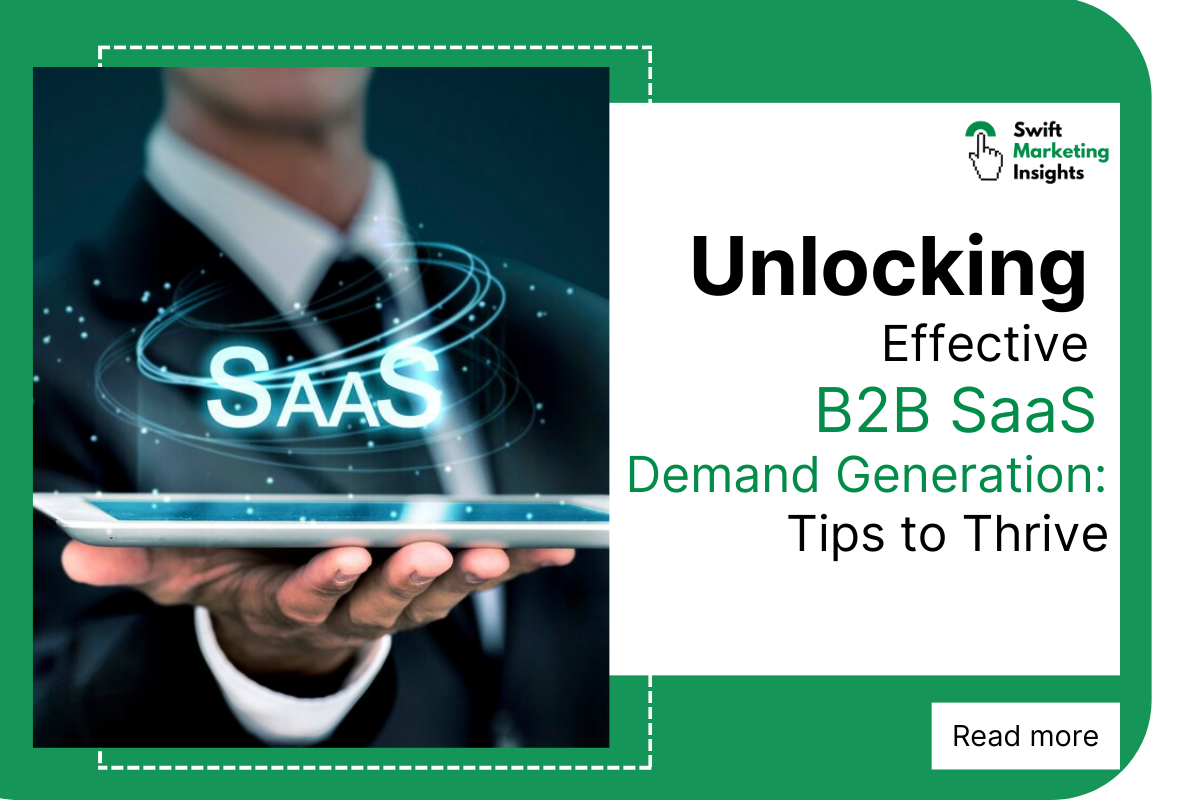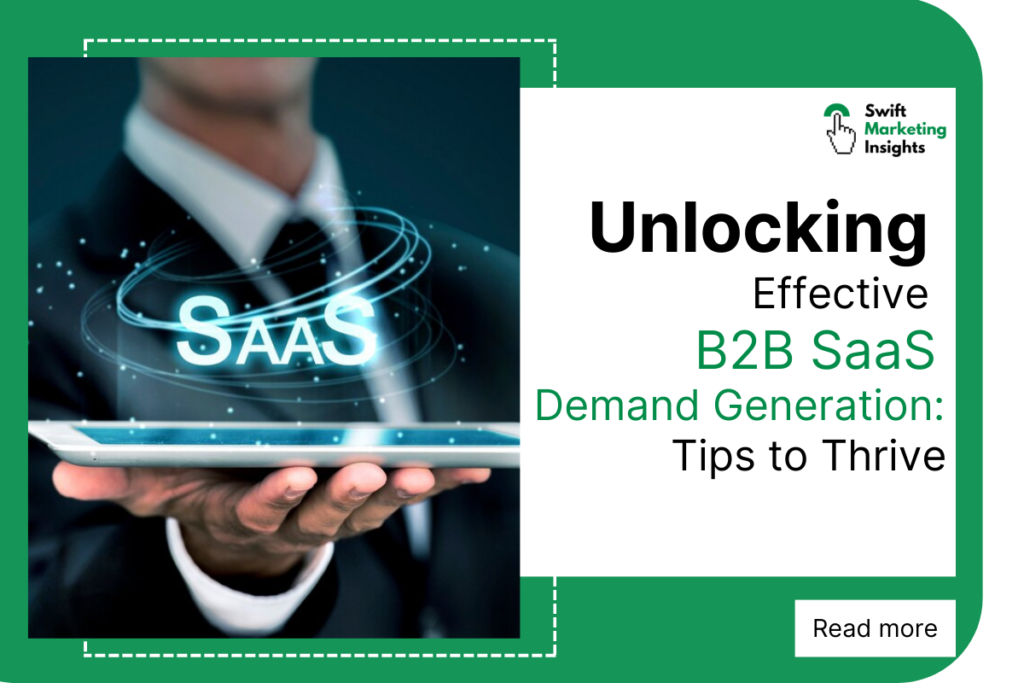

In the current market environment where businesses are extremely competitive, it is imperative for B2B SaaS products to create a demand for their products for them to continue to thrive. Strategies for demand generation might be a good choice for you to attract, engage, and transform prospects into real customers, generating growth for SaaS business. We will walk through some tried and tested tips and strategies to help you craft a successful B2B SaaS demand generation strategy in this article.
Content Marketing for B2B SaaS Demand Generation
Content marketing is one of the most important components of B2B SaaS ‘s demand generation strategy. Through developing useful blog content, utilizing case studies, the customers’ success stories, and creating engaging video content, you will effectively build up and maintain your target audience’s interest.
Creating Valuable Blog Content
Building buzz around your B2B SaaS product is one of the best ways of creating demand for it and can be carried out through great blog posts. Through developing useful and well-informed pieces that direct attention to the main struggles of your potential clients, while offering solutions to these problems, you will be seen as an expert in your sector. Incorporate long-tail keywords (LSI keywords) to strengthen the context of your article and increase the chances of being placed higher on search engine results.
Utilizing Case Studies and Customer Success Stories
The case studies and customer success stories of B2B SaaS demand generation are strong instruments. The platform where you will be showing how your product has helped businesses be successful will create reliability and trustworthiness to your audience. Add in some real-life examples of the customers and the results that are measurable to show the importance and effectiveness of your SaaS product.
Developing Engaging Video Content
Video content is getting more and more likes among the viewers and proved itself to be one of the most remarkable media in grabbing attention. Generate video content that is both entertaining and educational to help your B2B SaaS product and its benefits be seen and thus contribute to the rise in demand. There is an endless number of possibilities for what videos can do for you. For example, videos can show how your product works, display how your customers feel about it, and make tutorials about how to use your software.
Leveraging Social Media for B2B SaaS
Social media venues being universally available nowadays provide great possibilities across the board for generating the demand within the B2B SaaS. Through creating a compelling LinkedIn presence, launching focused social media ads to hit the clientele and collaborating with industry as well as influential people, you can compete for the audience’s attention.
Building a Strong LinkedIn Presence
LinkedIn gives businesses access to robust tools for B2B lead generation and professional networking opportunities. Settle for a LinkedIn company page that is well-crafted and shows your SaaS product’s special selling points and the merits therein. Also, constantly post good quality content, connect with some relevant industry organizations and your customer segment to create brand awareness and a hunger for your offers.
Running Targeted Social Media Ads
Through aiming your social media ads at the right audience, you can drive token of demand for your B2B SaaS product. For example, platforms like Facebook and Twitter provide you with a broad range of targeting options that let you reach groups based on such demographic indicators as location, job title, & industry. Create a highly appealing and irresistible ad copy & employ attractive visuals to capture your target audience’s attention and drive them to act.
Engaging with Industry Influencers
Working together with the market thought leaders can be highly effective multiplication of the B2B SaaS demand generation process. It is recommended to identify those personalities who are opinion leaders in your industry and who have wide followers and high reliability. Get in touch with them by using social media, guest posting or influencer cooperations. Their recommendation & advertisement of your product can be your way out in gaining credibility and popularity as well as increasing demand.
Email Marketing Strategies for B2B SaaS
Email marketing is one of the most powerful and result-returning B2B SaaS demand generation channels. Through developing an effective email list, creating powerful email campaigns, and cultivating leads by email automation you can drive subscriptions and sales for your SaaS business.
Building an Effective Email List
A good email list is a kernel of every campaign of successful email marketing. Give them quality content, examples, or privileged access to guarantee the engagement when visitors sign up to your email list. Divide your email list into different segments depending on various information such as the industry, job title, or the level of interest, and deliver appropriate and individual content to each group.
Creating Compelling Email Campaigns
The email campaign is among the chief important things you cannot afford to neglect because it is used to interact with your email subscribers, and as a result, create user demand for your B2B SaaS product. Customize your emails using their respective interests, difficulties, and the phase in which they are in the buying cycle. With appealing subject headers, brief and tempting content, and catching call-to-action buttons, motivate customers to prefer your offer over the (possibly) competitor’s.
Nurturing Leads Through Email Automation
Using email automation, you can nurture your leads and make sure they proceed through the sales funnel. Implement email automation that is triggered by a customer action or time schedule, delivering content, educational materials, or product updates to a recipient’s inbox. Giving value and keeping top-of-mind through your marketing, you can eventually fuel conversations and turn them into transactions.
Paid Advertising and PPC for B2B SaaS Growth
PPC (pay-per-click) campaigns and paid advertising are extremely efficient tools for going very fast in B2B SaaS lead generation. Through using Google Ads and advertising platforms as an alternative, you can use your efforts to target the potential customers you want, widen your brand exposure, and improve qualified traffic to your website.
Google Ads and Search Engine Marketing
Google Ads, being a mighty demand generation tool for B2B SaaS, is worth considering. Conduct a deep search on keywords to find out the keywords with high search volume (and low competition) as these will be of benefit to intended business. Create an appealing ad copy and make use of ad extensions to enhance visibility and clicks. Track and monitor your campaigns so that you can know when they perform well and optimize your campaigns accordingly.
Retargeting Campaigns
Retargeting ads can be a powerful strategy to remind visitors who previously entered your website without becoming your customer. Incorporating a tracking pixel on your website, you can have a chance of serving your ads to a person according to their respective interests as they browse different websites and social media platforms. Retargeting enables you to reestablish the connection and motivate users to come back and shop.
Exploring Alternative Ad Platforms
Besides Google Ads, there is also the possible alternative of exploring different ad platforms to build a broad-spectrum SaaS demand generation efforts. Companies, like Facebook Ads, Twitter Ads, and Quora also offer personalized targeting and can help you find your industries or niche’s peculiar audience. Build a test base across multiple platforms and various types of ads to determine which channels bring the most sales to your SaaS product.
Wrapping it Up
The successful buildup of the lead generation and product sales for B2B SaaS solutions is a comprehensive and multifaceted process. The utilization of the techniques revealed in this article such as content marketing, social media, email marketing, and paid ads can help you find, engage and finally convert the prospects for the SaaS product. Constantly evaluate and refine your demand generation campaign to maintain the success of the business and sustain long-term growth in a highly competitive industry of SaaS.






